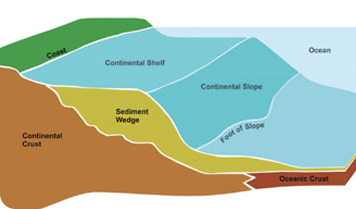Geo-#giroditalia2023 - Stage 11. The peloton is going to race through an ocean today! We've reached the Ligurian 'ophiolites', the oceanic lithosphere remains below which the northern Apennines were offscraped and stacked up, which you may see as the black rocks along the race. 



Geologically, oceans, are not bodies of water, but the crust type that forms by magmatism at mid-ocean ridges. Continents continue into the sea as shelf and slope, and only then the ocean starts. The Apennines are shelf and slope rocks, the 'Ophiolites' are oceanic crust rocks. 

The shelf and slope of the Northern Apennines became in the Jurassic separated from the shelf of Iberia and Corsica by an ocean: the Piemonte-Ligurian Tethys, that was connected to the Atlantic Ocean. This ocean opened between ~160-140 Ma ago. 

From 80 Ma ago, subduction zones formed within the ocean between Corsica and the Adria, and eventually Adria's slope and shelf entered the trench, to form the Apennines. Let's hope the rain will not turn the rocks into an ocean again again today! tinyurl.com/2fmyfyfy
Link didn't come through: check out an animated GIF of the opening and closure of the Piemonte Ligurian Ocean and surrounding continents in the tweet below.
https://twitter.com/vanHinsbergen/status/1506411394031394822
• • •
Missing some Tweet in this thread? You can try to
force a refresh

 Read on Twitter
Read on Twitter





